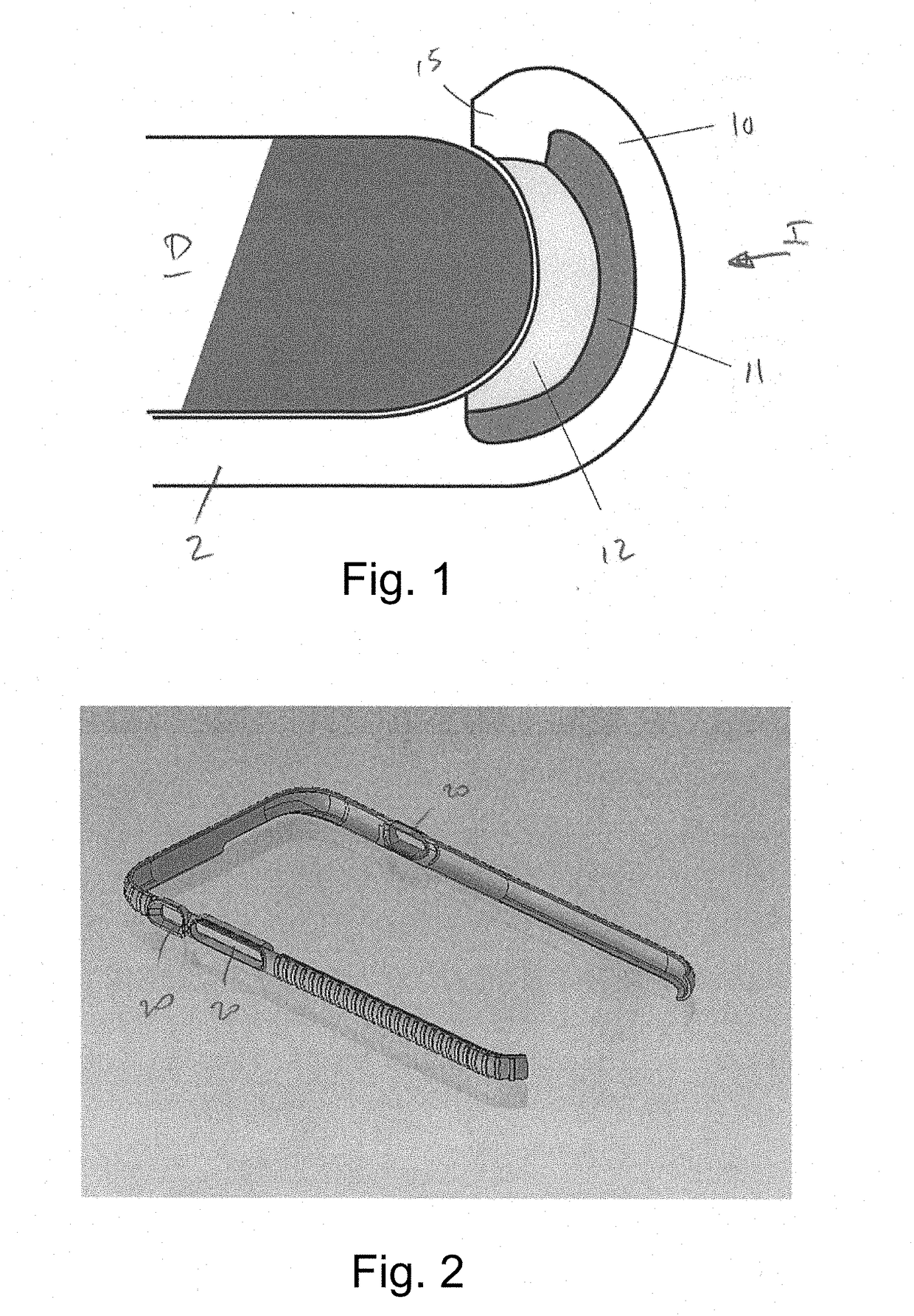Case for a mobile device
a mobile device and case technology, applied in the field of cases for mobile devices, can solve the problems of hard inner materials scratching the device, easy scratches and cracks in the outer layer,
- Summary
- Abstract
- Description
- Claims
- Application Information
AI Technical Summary
Benefits of technology
Problems solved by technology
Method used
Image
Examples
Embodiment Construction
[0028]The case 1 shown in full in FIG. 4 has a back 2, two side walls 3, 4, a bottom wall 5 and a top wall 6.
[0029]The illustrated case is for an iPhone 6S, but the principles apply to cases for all smart phone and tablet devices as well as e-readers and the like.
[0030]The back 2 is optional as the principles described here apply equally to a backless band which surrounds the edges of the device. The three layer structure forming the majority of the side wall structure is shown in FIGS. 1 and 5. This comprises an outer layer 10 of flexible polymer, an intermediate layer 11 of dissipation material and an inner layer 12 of damping material.
[0031]The outer layer 10 of flexible polymer may be TPU, TPE or silicone. If the back 2 is present, this material will form the majority of the back, although other materials may extend to a small extent across the back.
[0032]The dissipation layer 11 may be PC, ABS, PC / ABS blends, Hard TPU grades, glass and fibre-filled rigid thermoplastics, nylon, ...
PUM
 Login to View More
Login to View More Abstract
Description
Claims
Application Information
 Login to View More
Login to View More - R&D
- Intellectual Property
- Life Sciences
- Materials
- Tech Scout
- Unparalleled Data Quality
- Higher Quality Content
- 60% Fewer Hallucinations
Browse by: Latest US Patents, China's latest patents, Technical Efficacy Thesaurus, Application Domain, Technology Topic, Popular Technical Reports.
© 2025 PatSnap. All rights reserved.Legal|Privacy policy|Modern Slavery Act Transparency Statement|Sitemap|About US| Contact US: help@patsnap.com



